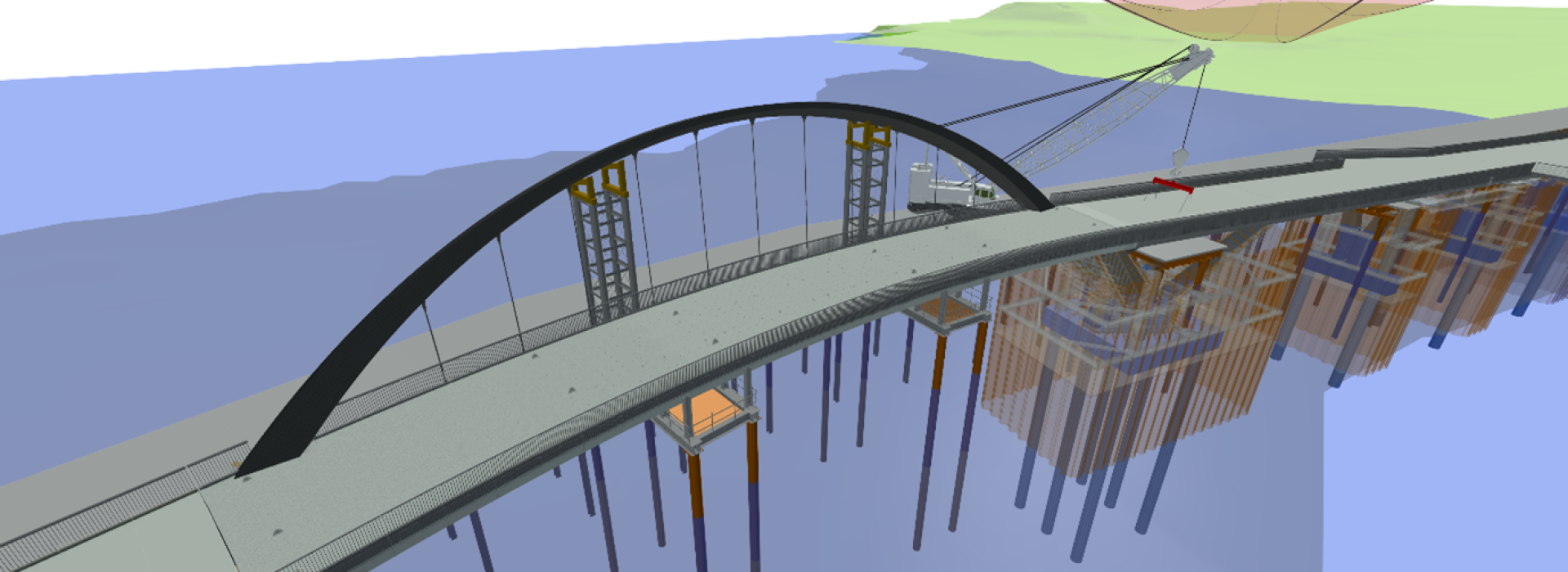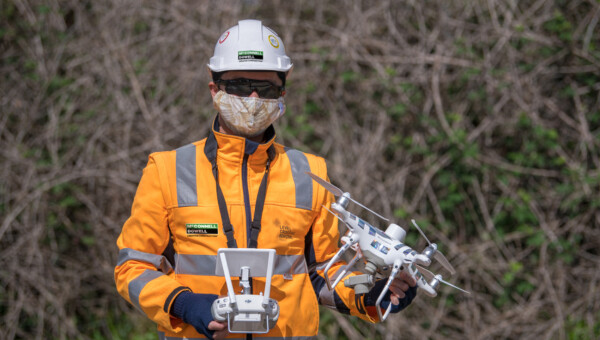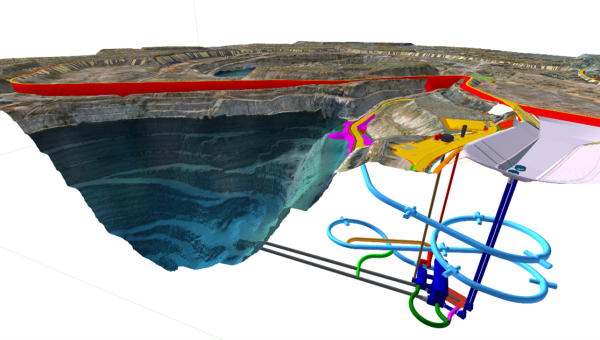On the Old Māngere Bridge Project in Auckland, our digital engineering team developed a detailed temporary works and construction staging model to test and coordinate all temporary and permanent works interfaces.
This 260 m long pedestrian and cycle bridge traverses a sensitive marine area and under 110kV power lines, presenting several complex construction challenges.
Mobile crane and piling rig movements were tested against the HV power line Minimum Approach Distance (MAD) envelope to ensure the construction methodology could be achieved safely. In a New Zealand first, the HV envelope geometry was referenced by geospatial sensors fitted to the mobile plant, triggering proximity warnings and automatic shut-down if the envelope was breached. This tool is now widely used across New Zealand.
Other elements that were modelled included the adjacent temporary bridge structure and piling platforms; cofferdams at each pier; pier form and falsework; all propping, and temporary support structures for the main deck and steel arch. Fabrication drawings were subsequently developed from the model for the temporary support elements.
Our use of digital engineering on this project contributed significantly to a safe and efficient construction methodology.




